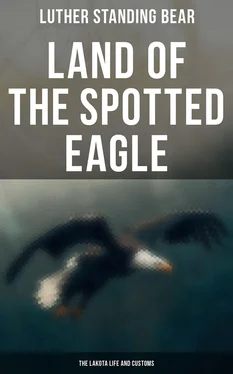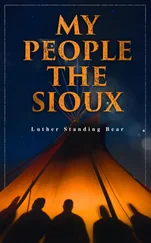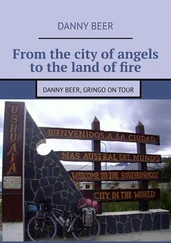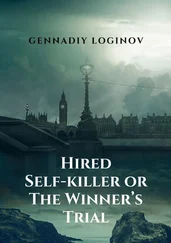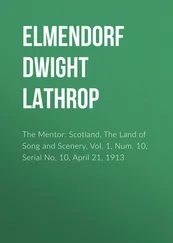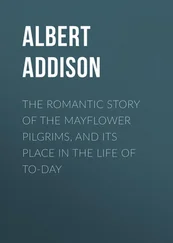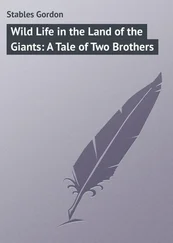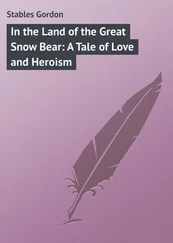What would happen the following Saturday night at what we called, ‘Chapel meeting’? Every Saturday night the entire school gathered for a meeting in the chapel at which assembly various school matters were discussed. General Pratt, the superintendent of the school, usually gave a talk, urging us to be good pupils and instructing us in the ways of good behavior. Reports were given by the teachers and the roll-call held. Also any boy or girl who had broken any of the rules during the week were given the opportunity to report themselves and say they were sorry and would in the future attempt to do better. If they did not do this, they stood a chance of being reported by some other student or by the teacher. This was a splendid rule, but, of course, not pleasant, and I had never had a bad report handed in.
Saturday night came and the building was full of students and teachers. I was filled with anxiety and could not keep my mind from that reading lesson. I was, I thought, to be reprimanded before the entire school for having a poor lesson.
Soon General Pratt was on the platform, talking about the value of possessing confidence. He said he always wanted us to do our best and never to be afraid of failures. If we did not do well at first try over and over again, and as he said this he struck the table with his fist to emphasize his idea. Then he told the students that the class of Miss C. had received a reading test and that Luther Standing Bear had read his lesson eleven times in succession and correctly every time. My heart lightened. I truly liked General Pratt and words of praise from him meant a good deal to me. But in spite of the praise that I received that day and the satisfaction that I have had in all these years in knowing that I was a good student, I still have the memory of those hours of silent misery I endured in childish misgivings.
We were to learn that according to standards of the white man those not learned in books are not educated. Books were the symbol of learning, and people were continually asking others how many books they had read.
The Lakotas read and studied actions, movements, posture, intonation, expression, and gesture of both man and animal.
When the first white teachers came among us to take charge of the day schools, they were schooled and could read books. But they were unlearned in the ways of our country. Many things they did showed that they were not adjusted to the surroundings, and were amusing to us. I remember well one of the first men teachers sent out to take charge of the district schools. He was furnished a wagon and team but not being acquainted with teams, a driver was furnished also. For a while the driver took him from district to district until he felt able to handle the team himself. One day this teacher came to a place in the road that sloped down very abruptly. He neglected to put on the brakes and the horse began running down the hill. The driver, thoroughly frightened, thrust his leg out between the spokes, thinking to stop the wagon. Of course his leg was broken. Soon after he was again well, this man left his team to follow a flock of prairie chickens. When he returned to the road where he had left the wagon and horses, he found they had gone. Some time later he was picked up all fagged out and apparently lost in his sense of direction.
In teaching me, father used much the same method as mother. He never said, ‘You have to do this,’ or ‘You must do that,’ but when doing things himself he would often say something like, ‘Son, some day when you are a man you will do this.’ If he went into the woods to look for a limb for a bow, and forked branches for a saddle, I went too. When he began work I was sure to be close by, quietly observing with the keenest interest.
The most important thing for me to learn, father must have considered, was how to make and use the bow and arrow. For the making of these two articles was the first thing he taught me. There were trips to the woods which both of us enjoyed. I learned that ash was the preferred wood for a warrior’s bow. A hunter would use a cherry or cedar bow. The wood of the cedar made a very strong bow, but it cracked easily. As for myself, I started with willow wood. It was easy to work with and quite strong enough for me. Hickory does not grow in the country of the Lakotas, and so was not used until the white people brought it to the plains in their wooden yokes. If a discarded yoke was found, it furnished material for two good bows.
A bow looks to be a very simple weapon, but sometimes a great amount of skill is used in its making. A bow in the rough does not look like much, but when it has been smoothed on a rough surfaced rock, heated and bent to shape over a fire, and polished, it looks very little like the limb of a tree. The Lakota bows were short and strengthened with sinew, the man behind the bow deciding the strength. When the bow was shaped, small flattened strings of wet sinew were pasted lengthwise on the back until it was covered. The ends of the strings did not meet flush, but each extended, wedge-shaped, past the other, thus adding strength. The tips of the bow were then covered with sinew and the weapon placed in the shade to dry slowly. When thoroughly dry, the hard edges of sinew were rubbed smooth and tassels of dyed horse hair added as decoration. A bow of this description was good for many years’ use, and a warrior armed with such a weapon and plenty of arrows in his quiver felt pretty safe. The bow was strictly a man’s weapon, and I have never known a woman of my tribe to even try to use one.
For arrows we used the slender limbs of a shrub which we called the ‘early berry,’ but which the white people called the wild currant. In the spring, masses of pink, red, and almost black berries appeared so it was aptly named wica-kanaska or early-berry bush. The limbs of this shrub grew straight up from the ground and had very small hearts or cores. Arrows made from them were heavy and could not be wind-swept. Feathering correctly was quite important too. The best specimen of Lakota hunting arrow had three feathers finished with a fluff of down that came from under the tail feathers of the bird. Two red wavering lines, the symbol of lightning, were painted from the feathered end halfway to the arrow tip, but grooved the rest of the way to the tip so as to allow the blood to flow freely from the body of the animal, thereby hastening death.
Every warrior wore his quiver as he wore his clothes—it was a part of his attire. Ordinarily the quiver was worn at the back, but in case of quick action it was thrust under the belt of the warrior or hunter in front where his right hand reached the head of the arrows with scarcely a movement. A skilled man shot with great rapidity when necessary, doing so automatically. At night the warrior’s bow and quiver hung on the tripod at the head of the bed, so that it was close at hand.
A boy’s first bow was not a weapon; it was a toy made of a twig so small it could be used in the tipi. The arrow was of slough grass. Shooting was a game called cunksila wahinkpi. As I grew larger and older I always had a bow to suit my age and size. Unconsciously my bow became a part of my body, as it were, and I used it as I did my feet, hands, or arms.
At the age of eight I was considered expert enough to be included in a party of youths who went on a hunting trip. A deer was killed, and though I was in no way responsible for it I brought home my first piece of meat. Father at once gave away a horse. I was a very proud boy and my longing to become a good hunter increased. I wanted to bring my family more meat.
Just as unconscious skill came to me in the use of my bow and arrow, so it came to me in riding. When I was on my horse I might have been a part of him, for nothing but force could unseat me. When too small to leap to his back, I ran and climbed up his foreleg like a squirrel and was on the go while climbing; for small chance a slow horseman would have getting away from a rapid firing arrow expert. Always we kept in mind the skill of the enemy. But being a rider did not mean being a complete horseman. Father taught me how to make saddles of cottonwood and elm, ropes of rawhide or twisted buffalo hair, blankets, and halters. I learned to look after my horse when he was troubled with sore feet, and how to make horse-shoes of buffalo hide; and, too, how to recognize horse sense and intuition. The horse is continually giving signs of what he sees, hears or smells. In the daytime the Lakota horseman watched his horse’s tail and ears. With these he indicated the presence and direction of animals or people. At night he snorted at any unusual smell or sound. My father once had a horse which was as good as any watchdog. At the slightest cause he would snort his distrust or displeasure, then run straight to father. For this reason father used him in his journeys, as he could lie down at night feeling sure that nothing would get near without a warning from his friendly sentinel.
Читать дальше
